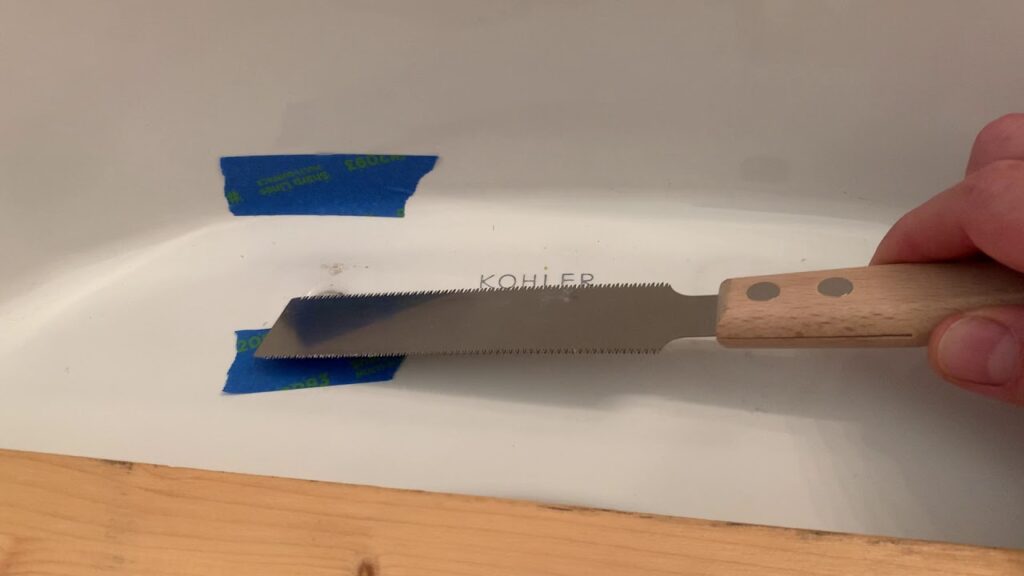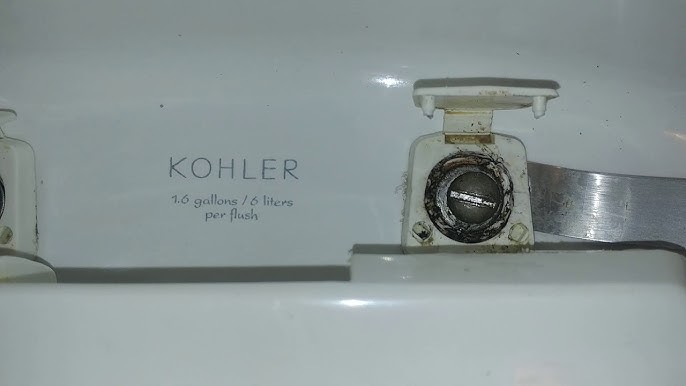You can remove stuck toilet seat plastic bolts in three ways, like using lubricant or heat, and lastly, directly cut the bolts if heat and lubricant can’t do the job. I would recommend using lubricant as it is the safest way without damaging the toilet seat.
In every house I lived in for almost 50 years, at least once, the plastic bolts got stuck. It’s so much hassle, and you will need a lot of patience. To understand why it got stuck and how to remove it properly, I will share my previous experience to help you along the process.

Quick Jump
Why Do Plastic Bolts Become Stuck on a Toilet Seat?
You might think it is not that important to know why the plastic bolts got stuck on the toilet seat in the first place, but In reality, it’s pretty essential to know to solve the issue here. If you know what happened here, you might get to avoid the issue in the future.
That’s why I will briefly dive into the common reasons why plastic bolts on a toilet seat become stuck.
Generally and In my experience, It really comes down to a couple of critical factors, such as the nature of plastic itself and the environment those bolts are operating in. You see, plastic bolts are obviously not as strong and durable as metal fasteners. As a result, they’re usually made from lightweight polymers that make them easy to install and remove. But that material compromises their strength.
Plus, those bolts are constantly exposed to water each time you flush the toilet. Over time, minerals in the water can cause buildup and corrosion on the bolt. Just a little bit of calcium, lime, or rust forming on the threads can be enough to make the bolt stick tightly in place.
Besides, the humidity in the bathroom environment also doesn’t help. That moist air causes the plastic bolts to swell up ever-so-slightly. Again, it doesn’t take much swelling to make them hard to turn and loosen up.
And if someone overtightened the bolts during installation, well, that’s just asking for trouble down the road. Plastic is flexible by nature, but tightening a bolt beyond its limit can deform it just enough to bind it to the toilet seat. Overtightening can also cause the plastic to fracture internally over time, essentially gluing it in place.
The toilet seat itself, pushing down on the bolts day after day, can also fatigue and deform the plastic over the years. It’s just a perfect storm of the plastic material, the bathroom environment, overtightening, and repetitive mechanical stress that eventually renders those bolts stuck in place.
But not to worry! With a bit of time and the right tools and techniques, we can definitely get those pesky plastic bolts freed up so you can remove the toilet seat.
Tools and Materials Might Be Needed

Let’s make a few things clear before I start this section. There are multiple ways, and to be specific, 3 ways, you can remove the stuck toilet seat plastic bolts.
And depending on those 6 ways, the tools and other materials might be needed. So, don’t get overwhelmed just by seeing all these tools because you will need only a few of them. Go through all the ways I discussed in the following section to know further.
- Penetrating Oil: Helps loosen corrosion and makes the bolt more effortless to turn.
- Adjustable Wrench/Ratchet: For gripping and turning the plastic nut.
- Hacksaw/Dremel: To cut through the bolt.
- Screwdrivers: For turning bolts with stripped heads.
- Pliers: For gripping and holding a spinning bolt.
- Torch Lighter: For heating stuck plastic nuts.
- Drill/Drill Bits: To drill them out.
- Hammer/Cold Chisel
- Rags & Cleaners: For cleaning up old sealant, grime, rust
Just in case you have to resort to the last-ditch effort of cutting the bolts, having replacement parts on hand is crucial. I’m sure you don’t want to leave your toilet seat unusable.
3 Ways to Remove Stuck Toilet Seat Plastic Bolts

Depending on the situation, how and which way your plastic bolts got stuck, you need to find a way to unstuck it. Sometimes, it just takes a few simple ways, and sometimes, you might need to do it the hard way.
Whatever the situation might be, I will go through those and discuss exactly how to remove stuck toilet seat plastic bolts.
Way #1: Using Lubricant
I guess you already tried it yourself or know about it. Anyway, I will try to share some wisdom here on how and when to use it.
First things first, you’ll need a can of penetrating lubricant. You can use any lubricant at your convenience. Have it handy, along with your adjustable wrench and pliers.
After that, ensure the bathroom is well-ventilated because you’re about to use a spray. Also, you might want to put down some old towels or a bucket to catch any dripping lubricant.
Liberally spray the penetrating lubricant directly onto the stuck bolts and the area around them. You want to make sure it seeps into the threads and the rust or corrosion.
Give the lubricant some time to work its magic. I’d say let it sit for at least 15 to 30 minutes. During this time, it’s busy breaking down rust and corrosion, making it easier for you to turn the bolts.
After waiting, grab your adjustable wrench and try turning the plastic nuts counterclockwise. The lubricant should have made this a smoother process. If it’s still tough to budge, don’t force it. You might need a little more time for the lubricant to work its charm.
That’s it!
Way #2: Using Heat
Heat is another easier way to unstuck the plastic bolts. Although it might damage it, you might need to use it if the previous way didn’t work.
Here’s how you’re going to do it!
First, make sure to turn off the water supply valve behind the toilet. I’m sure You don’t want any surprises when applying heat around the toilet.
Grab your torch lighter, preferably one with an adjustable flame. Light it up and start applying the flame directly to the nut underneath the toilet seat, where the plastic bolt is threaded in. Heat it for 30-60 seconds at a time, then take a break to let it cool briefly.
What you’re trying to do is warm and soften the plastic so it releases its grip. But don’t melt it completely! Just soften it up enough that you can then try to turn the nut by hand or with your wrench/pliers.
If the nut won’t budge, reheat it again and really concentrate the flame right on that place. The plastic will expand when hot and should start moving. Have your wrench ready to go on it.
Be patient through the heating-cooling cycles. The key is taking breaks to allow the plastic to contract slightly before trying to turn it. Keep hitting it with short bursts of heat, try turning, and eventually, it should break free.
Once you finally get the nut loose, unscrew the bolt fully out by hand, and it should turn pretty freely now after being heated up. Repeat the process to remove the second bolt.
Way #3: Cutting the Bolts
If the previous two ways didn’t work that much, it’s better to cut the bolts and replace them with a new one.
But, in this case, you need to be extra cautious. First up, you’ll need a hacksaw or rotary tool like a Dremel. Make sure you have a sharp blade or cutting wheel attachment.
Okay, with your cutting tool ready, carefully position the blade against the shank of the bolt right where it sticks up above the nut. Apply steady pressure and start cutting through the plastic on both bolts.
Take it slow and easy here. You don’t want the blade to slip off and scratch up your toilet! Cut all the way until the bolt shank is severed and separated from the nut.
If the bolt heads are also stuck, you may need to cut deep notches across them, too. As a result, it allows the use of a flathead screwdriver to unscrew the remainder of the bolt and then out.
Once you’re done with it, the bolt pieces should unscrew pretty easily by hand or with pliers. If not, keep doing that and reduce them down to smaller pieces until they can be picked out.
I recommend replacing the severed plastic bolts with metal ones moving forward. They won’t seize up on you like the plastic ones.
Wrap Up
Even though I suggested cutting the bolts, remember to use it as the last option. As for the other things, I guess you have a pretty good idea by now. Using lubricant is the best idea, and heat might damage the bolts and surroundings if you’re not careful.
Good luck!

Chino is an accomplished Founder and Home Improvement Contractor with a passion for transforming living spaces into beautiful, functional, and comfortable homes. With years of experience in the industry, he has established himself as a reputable expert in the field, earning the trust and admiration of numerous clients.
